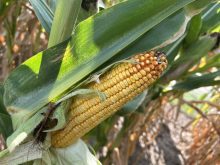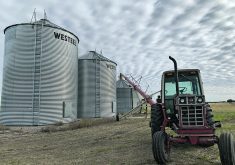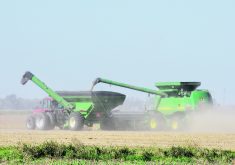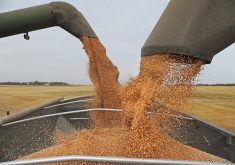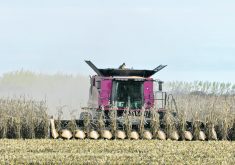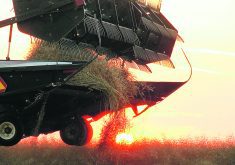Saskatchewan
Poor weather stalled harvest progress last week.
Roughly 72 percent of the crop is combined and 19 percent is swathed or ready to be straight-cut.
The five-year average for this time of year is 84 percent combined and 11 percent swathed or ready to be straight-cut.
Much of the province received rain, from trace amounts to more than 25 millimetres.
Topsoil moisture conditions on cropland are rated 78 percent adequate. Hayland and pasture topsoil moisture is rated 83 percent adequate.
Strong winds and rain lodged crops this week. Moisture, frost and disease caused quality issues. High levels of fusarium head blight are being reported.
Read Also
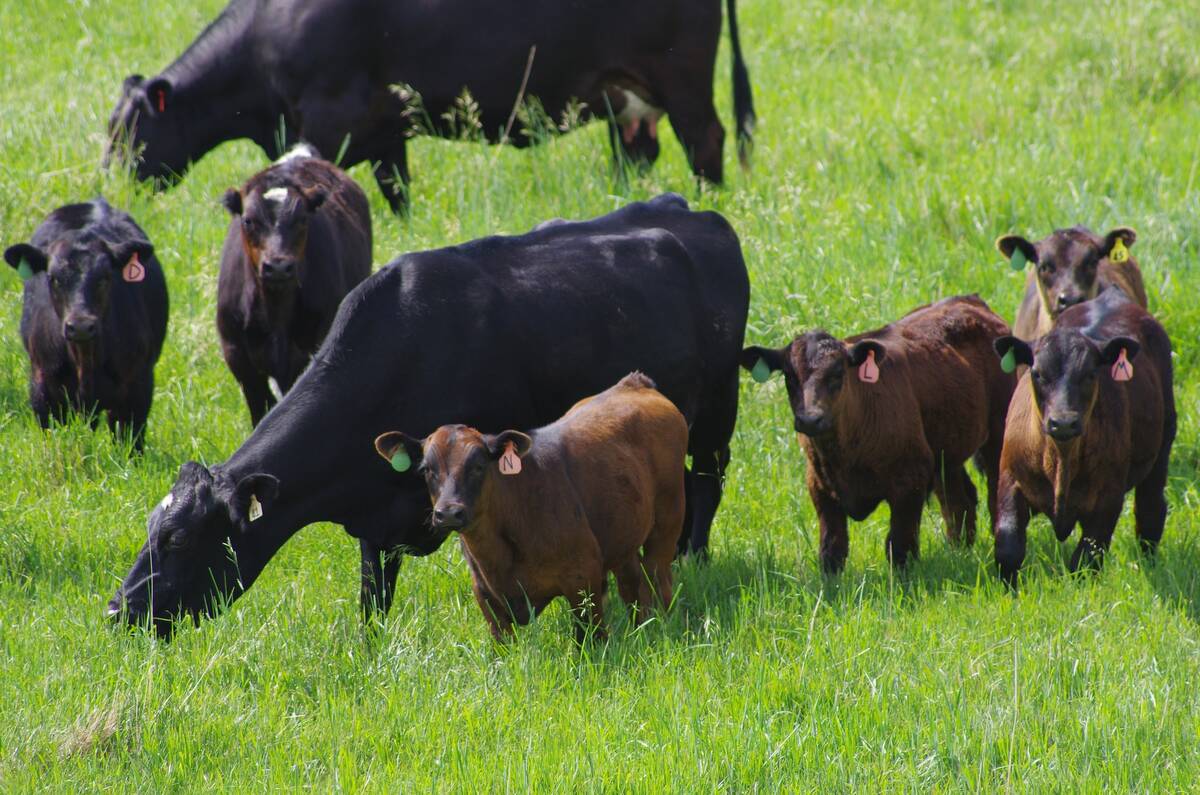
Manitoba extends Crown land rent freeze
Manitoba government links the continued rental rate freeze on grazing and forage leases to economic and environmental challenges facing the industry
Of the crops that have been harvested, 13 percent of hard red spring wheat is expected to fall into the 1CW grade, 35 percent in 2CW, 33 percent in 3CW and 19 percent CW feed.
SOUTH
Cool and wet weather stalled harvest for many producers.
Sixty-seven to 81 percent of the crop is combined. An additional nine to 21 percent is swathed or ready to be straight-cut. The five-year average is 85 to 90 percent.
Many producers in the region have wrapped up harvest, while others will need another one to three weeks of good weather to finish.
Hard red spring wheat grades have the highest ratings in the 2CW and 3CW category. Quality remains a concern for producers because many cereal crops have higher-than-normal levels of fusarium head blight.
Moisture, frost and diseases have also caused quality concerns. Yields are reported as average.
Much of the region received rainfall with Moose Jaw receiving the highest amount at 44 mm. The Moosomin area has reported the greatest amount of rainfall since April 1 at 921 mm.
Topsoil moisture conditions on cropland are rated 49 to 86 percent adequate. Hayland and pasture moisture is rated 79 to 89 percent adequate.
Strong winds blew canola swaths around ,and heavy rain lodged standing crops. Waterfowl continue to damage some crops.
CENTRAL
Frequent rain and cool weather kept most producers from making much harvest progress.
Fifty-seven to 76 percent of the crop is combined. An additional 17 to 31 percent is swathed or ready to be straight-cut. The five-year average for this time is roughly 82 percent combined.
Most farmers will need a few more weeks to wrap up harvest.
Hard red spring wheat grades are rated highest in 2CW and 3CW. Quality is a concern with higher-than-normal levels of fusarium infection levels. Yields are reported as average.
Most of the region received rain with the Foam Lake areas receiving the most at 42 mm. Its total rain received since April 1 is 772 mm.
Topsoil moisture conditions on cropland are rated 73 to 89 percent adequate. Hayland and pasture topsoil moisture is rated at 77 to 84 percent adequate.
Wind has blown canola swaths across fields and lodged standing crops. Some standing crops are sprouting. Much of the harvested grain is coming off tough.
NORTH
The region made good progress despite cool and wet conditions.
Eighty to 83 percent of the crop is combined. An additional 14 to 19 percent is swathed or ready to be straight-cut. The five-year average is 81 percent.
Some producers have completed harvest, but others need more warm weather.
Hard red spring wheat grades are rated highest at 2CW and 3CW.
Much of the cereal crops have higher-than-normal levels of fusarium head blight. Moisture, frost and disease have also caused quality issues. Yields are reported as average.
Rain in the region peaked in the Porcupine Plain area with 39 mm of rain. The North Battleford area has received 527 mm since April 1.
Topsoil moisture conditions on cropland are rated 84 to 95 percent adequate. Hayland and pasture topsoil moisture is rated 78 to 97 percent adequate.
Strong winds blew canola swaths across fields and lodged standing crops. Much of the grain is coming off tough.
Manitoba
Southwest
Cool, wet weather slowed harvest progress or brought it to a halt. Most areas of the province received 10 to 25 mm of rain in the first week of October.
Cereal and oilseed crops remain damp. Producers are reporting cereals with 18 to 20 percent moisture and canola with 12 to 15 percent moisture.
The canola harvest is only 35 percent complete. Growers are reporting average to above average yields.
The soybean harvest is underway. Early reports indicate solid yields.
Central
Harvest is 70 to 85 percent complete. Cereal crops are nearly complete. Cereal quality is below average. Mildew, sprouting, fusarium and ergot have downgraded crop. Canola harvest is progressing, with growers reporting yields of 40 to 45 bushels per acre.
Canola fields that received heavy rain are yielding 15 to 20 bu. per acre.
The grain corn harvest remains 10 to 14 days away.
Northwest
Rains in early October have saturated already wet fields. Some fields in the region are too soft to support trucks and combines. Wheat harvest is 70 percent complete. Yields are 40 to 70 bu. per acre.
Most of the canola crop is swathed. Forty percent is combined. Yields range from 20 to 40 bu. per acre.
Field pea harvest is complete. Average yield is 40 bu. per acre with good quality.
The soybean harvest is in the early stages.
Eastern
Cereal yields are respectable, with growers reporting spring wheat yields of 60 to 80 bu. per acre and oats are averaging 100 bu. per acre. Canola yields range from 30 to 50 bu. per acre.
Early soybean yields are 25 to 35 bu. per acre.
Pastures are doing well. Producers are reporting adequate winterfeed stocks and a 20 percent surplus of hay stocks.
Interlake
Twenty-five mm of rain and frequent frosts have delayed harvest. Combining is estimated at 60 percent complete. Many crops are left to harvest, including spring wheat, oats, canola and soybeans.
Corn silage is underway.
Alberta
Rainfall, cool weather and snow delayed harvest across Alberta. The highest amount of rainfall received was more than 70 mm in the central region. Some areas received more than 20 centimetres of snow.
A few areas are reporting loss in crop quality because of excessive moisture and frost.
Twenty-six percent of the crop has been harvested,while 23 percent is still in swath and 40 percent remains standing.
Tame hay and pasture growth is rated as 42 percent good to excellent.
Sub-soil and surface soil moisture reserves have not changed. Surface soil is rated 69 percent good to excellent and sub-soil is 61 percent.
SOUTH
Poor weather postponed harvest progress earlier in the week. Up to 80 mm of rain hit Calgary and 20 cm of snow appeared in other areas.
About 32 percent of cereals are in the bin. About 22 percent of canola is still standing, with 50 percent swathed and 28 percent in the bin.
Roughly half of spring wheat is still standing, and dry peas are 87 percent harvested.
Tame hay and pasture are rated as 42 percent good to excellent. Sub-soil moisture conditions are rated as 73 percent good to excellent.
CENTRAL
Cool weather with rain and snow temporarily stalled harvest. A few areas are reporting loss in crop quality, particularly for wheat.
Almost 18 percent of the crop is in the bin. About 22 percent of canola is standing. Roughly 55 percent is swathed and 23 percent harvested.
More than 60 percent of spring wheat is still standing, and dry peas are 84 percent harvested.
Pasture and tame hay conditions remain at 60 percent in good to excellent conditions.
Sub-surface moisture conditions are rated as 73 percent good to excellent.
NORTHEAST
Snow, rain and cool weather halted harvest. Reports of grade reduction because of frost and snowfall on cereal crops have been confirmed.
Roughly 20 percent of the crop has been combined. About nine percent of canola is standing, 72 percent swathed and 19 percent in the bin.
Nearly 67 percent of wheat is still standing and dry peas are 95 percent harvested.
Pasture conditions are rated 42 percent good to excellent. Tame hay is 39 percent.
Sub-surface moisture is rated as 77 percent good to excellent.
NORTHWEST
Showers and snowfall earlier in the week delayed harvest. Grades on some crops may be affected due to the frost.
About 10 percent of crops are in the bin. Roughly four percent of canola is combined, with 85 percent in swath and 11 percent standing.
Roughly 77 percent of spring wheat is still standing. Dry peas are 93 percent harvested.
Pasture and tame hay is 11 percent good to excellent condition.
Sub-surface soil moisture is rated 42 percent good to excellent.
PEACE RIVER
Early cool weather conditions stalled harvest progress. Loss in crop quality because of frost and snow has been reported.
About 48 percent of crops are in the bin. Roughly 11 percent of canola is still standing. Forty-six percent is swathed and 43 percent is combined.
About 34 percent of spring wheat is still standing and dry peas are 96 percent harvested.
Pasture and tame hay are rated as 36 percent good to excellent.
Sub-surface moisture is rated at 35 percent good to excellent condition.


